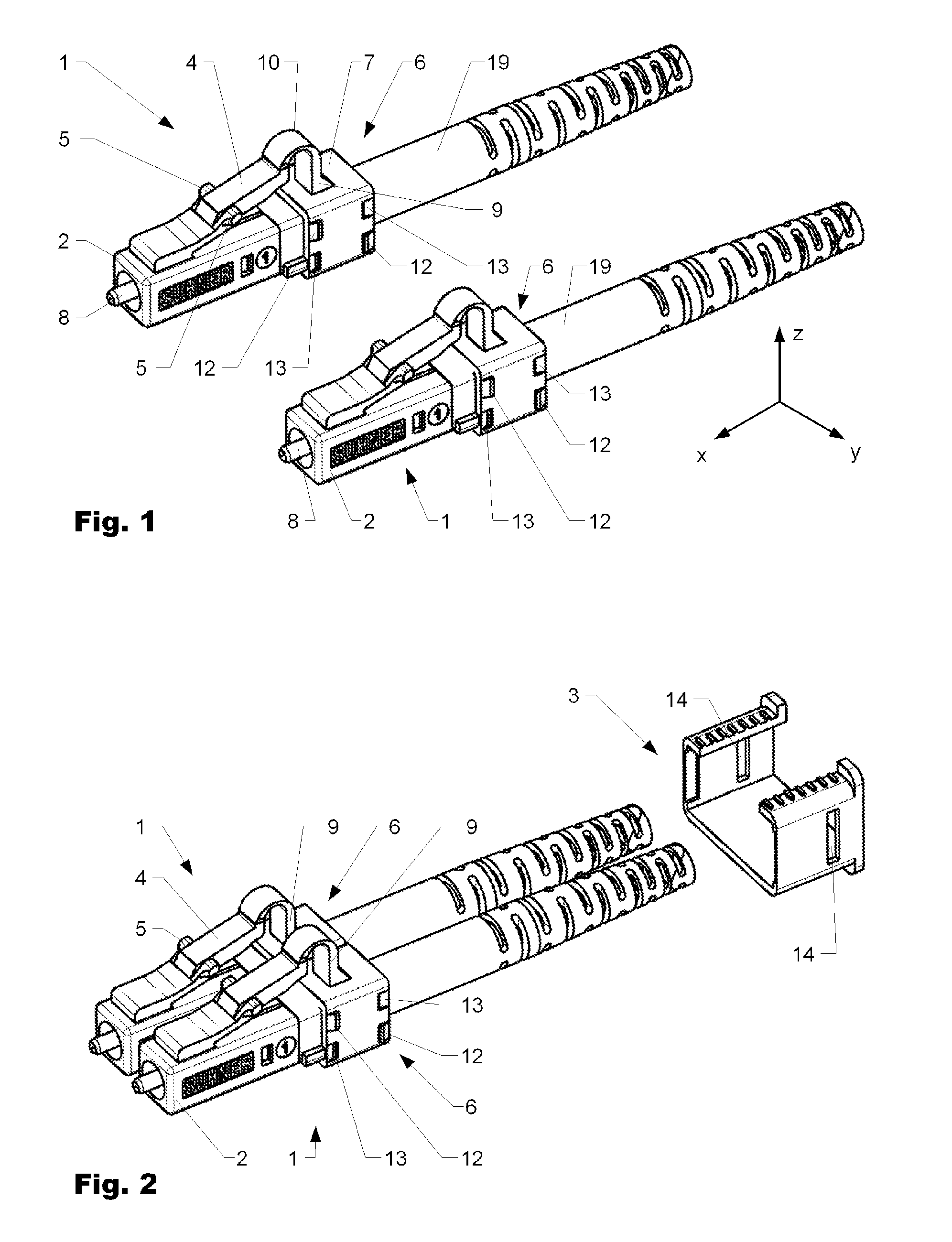Plug connector having unlocking mechanism
a technology of unlocking mechanism and plug connector, which is applied in the direction of coupling device connection, optical element, instrument, etc., can solve the problems of unfavorable conduction of forces, and complex structure of unlocking element, so as to achieve a simple and positive effect on the manufacturing cost of the connector
- Summary
- Abstract
- Description
- Claims
- Application Information
AI Technical Summary
Benefits of technology
Problems solved by technology
Method used
Image
Examples
first embodiment
[0043]FIG. 1 shows two connectors 1 in a first embodiment side by side. FIG. 2 shows the connectors 1 according to FIG. 1 joined laterally, together with a connector clamp 3 which is not yet operatively connected. FIG. 3 shows a perspective illustration of the two connectors 1 according to FIG. 1 obliquely from the front and above. The connectors 1 are situated side-by-side and operatively connected by means of the connector clamp 3. FIG. 4 shows the connectors according to FIG. 3 from the side.
[0044]The connectors 1 have a base body 2 and a blocking arm 4 which protrudes in an elastically resilient manner obliquely toward the rear from the front end of the base body 1. Laterally projecting locking shoulders 5 are arranged on the locking arm 4 and serve to snap into corresponding recesses in a correspondingly designed socket (not illustrated). A ferrule 8 for accommodating and for connecting an optical conductor (not illustrated in any detail) can be seen at the front end of the bas...
third embodiment
[0058]FIG. 8 shows a perspective illustration of two connectors 1 of a third embodiment obliquely from above. FIG. 13 shows a plan view of the connectors 1 according to FIG. 8. FIG. 14 shows a section through the arrangement of FIG. 13 along section line AA. The two connectors 1 illustrated in FIGS. 8 and 13 are operatively connected to one another by means of a connector clamp 20 which simultaneously serves as an unlocking element 6.
[0059]FIG. 9 shows two connectors 1 according to FIG. 8 side-by-side. The connector 1 which is at the front as seen by the viewer is illustrated partially in section so that the internal structure can be seen more clearly. In contrast to the arrangement according to FIG. 8, each connector 1 has its own unlocking element 6. If required, the unlocking elements may have operative connection means (not illustrated further) by means of which two unlocking elements can additionally be operatively connected to one another.
[0060]The plug connectors 1 each have ...
PUM
 Login to View More
Login to View More Abstract
Description
Claims
Application Information
 Login to View More
Login to View More - R&D
- Intellectual Property
- Life Sciences
- Materials
- Tech Scout
- Unparalleled Data Quality
- Higher Quality Content
- 60% Fewer Hallucinations
Browse by: Latest US Patents, China's latest patents, Technical Efficacy Thesaurus, Application Domain, Technology Topic, Popular Technical Reports.
© 2025 PatSnap. All rights reserved.Legal|Privacy policy|Modern Slavery Act Transparency Statement|Sitemap|About US| Contact US: help@patsnap.com



